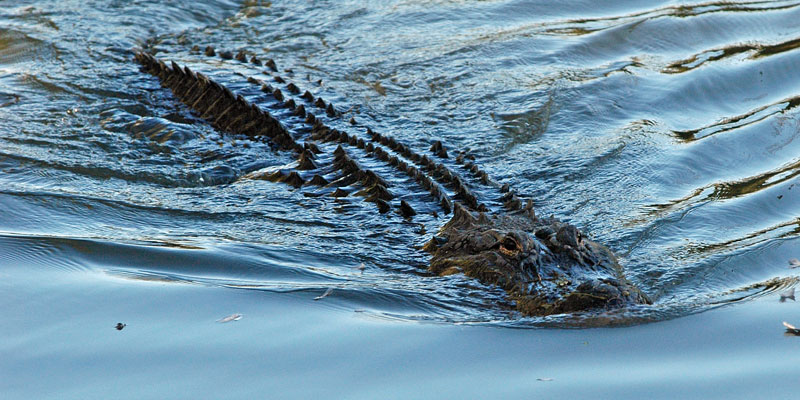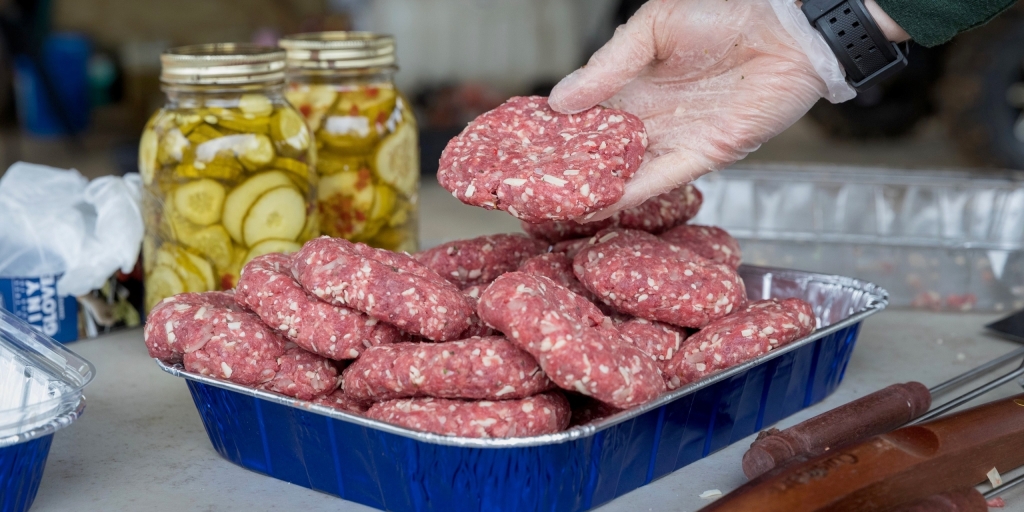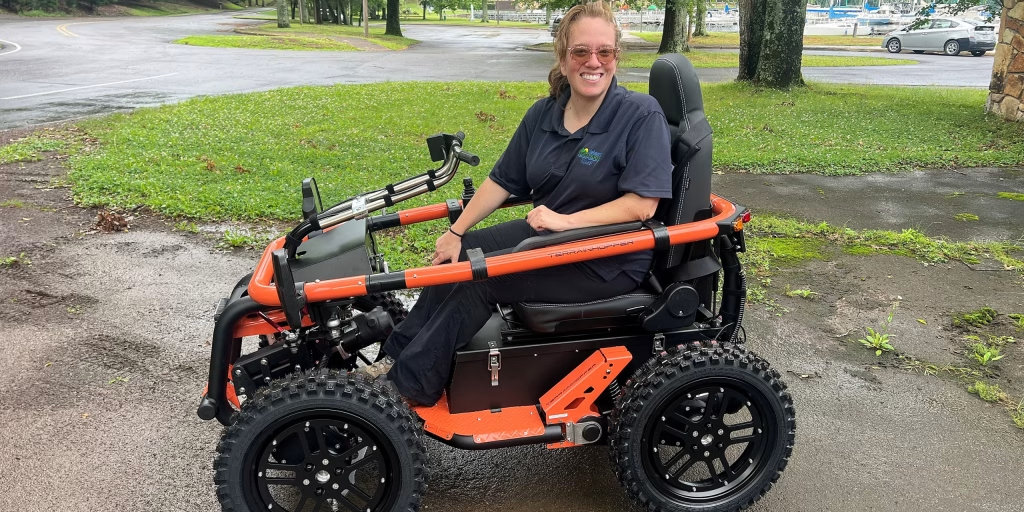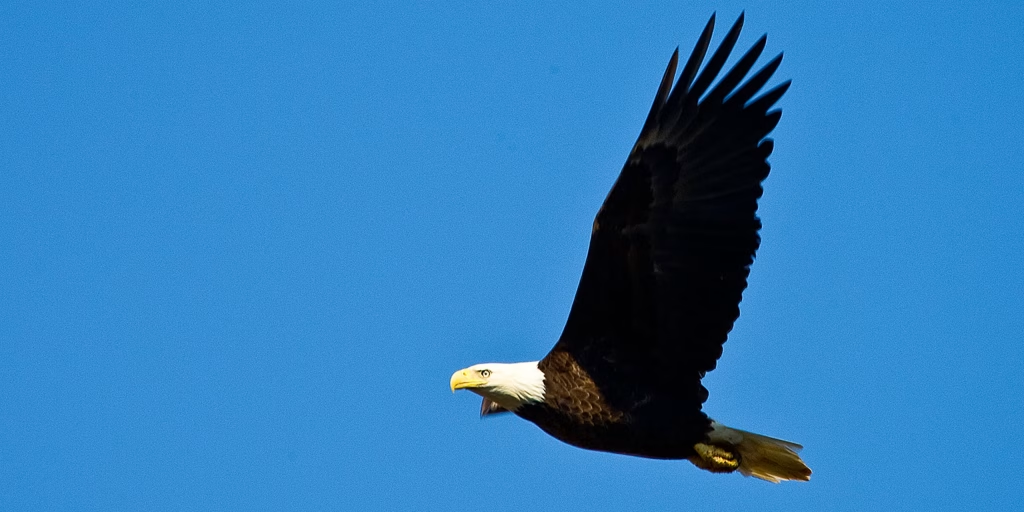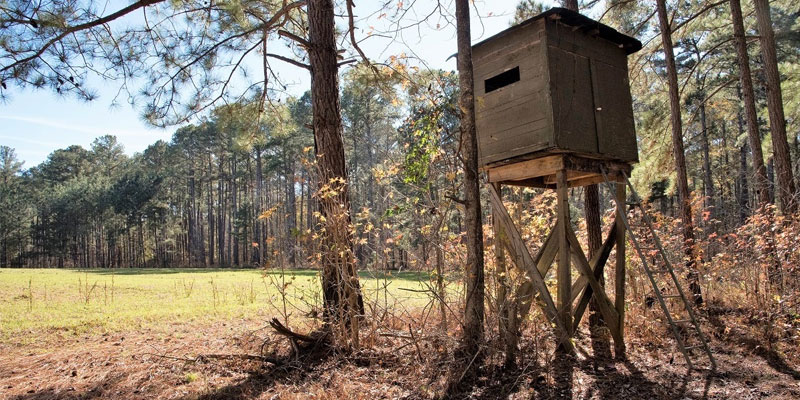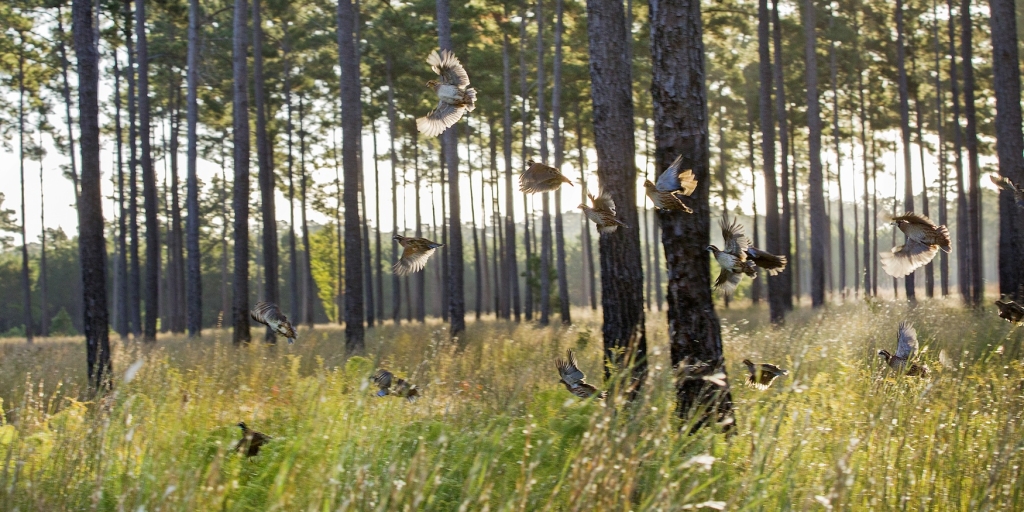Two significant changes are in store for those fortunate enough to be selected for a tag in the random drawing for the 2019 Alabama alligator season.
The Alabama Wildlife and Freshwater Fisheries (WFF) Division has created a new Coastal Zone and shifted the mandatory alligator hunting training workshop to online only.
“We went from mandatory in-person training to mandatory online training,” said Chris Nix, WFF’s Alligator Program Coordinator. “We did this to try to cut out an obstacle for people to participate. It was always a problem with several people each year, whether it was weddings or vacations or other obligations. It was especially hard on people coming from Birmingham or Huntsville to make the trip all the way to the coast for one class. And, we had just one class per zone each year, so hopefully this will be better. I think people that took the in-person training got a lot of really good information and it was effective.”
Registration for the alligator hunts is currently open at www.outdooralabama.com/alligators/alligator-hunt-registration. All entries must be received by 8:00 a.m. on July 10 to be considered for the random drawing in the five zones.
After the registration period ends, applicants can go to that same online page to check their status. If selected as a hunter or an alternative, a link to the mandatory online training video will be available.
“Those people who are drawn have seven days to complete the online training,” Nix said. “Once the online training is completed, then they can accept their status. The training is in five segments with questions to answer at the end of each segment. It will probably take most people less than 30 minutes to complete the online training.”
Nix said when the first alligator season was sanctioned in 2006, it covered only the southernmost portion of the Mobile-Tensaw Delta from the Causeway (Battleship Parkway) to the CSX railroad to the north. In the years since, the boundaries for the Southwest Zone have been expanded to include all of Mobile and Baldwin counties and private and public waters in Washington, Clarke and Monroe counties that lie east of U.S. Highway 43 and south of U.S. Highway 84.
Nix urged tag holders for several years to try the prime alligator hunting available south of I-10 in Baldwin and Mobile counties, but few gators have been taken in those areas.
The creation of the Coastal Zone with 50 tags for all territory below I-10 in the two coastal counties will target that underutilized population.
“That’s where we get 95 percent of our nuisance alligator complaints,” Nix said. “That’s where everybody lives, but there are also a lot of alligators down there. We would much rather hunters take those alligators out instead of us. Historically, we have averaged less than 5% of the harvest from the area south of the interstate.”
The 50 tags for the Coastal Zone will reduce the number of tags for the rest of the Southwest Zone to 100. Nix said 96 gators were harvested in the whole Southwest Zone last season.
“The Coastal Zone will include the private and public waters in Baldwin and Mobile counties that lie south of I-10,” Nix said. “Any body of water in the two coastal counties will likely have alligators. There are some really good alligators down there, and they’re not hunted at all.”
The Coastal Zone will have the same rules as the Southwest Zone and will utilize the same check station at the WFF’s office on the Causeway at 30571 Five Rivers Blvd., Spanish Fort, AL 36527.
Dates for the Southwest Zone and the Coastal Zone are sunset on August 8 until sunrise on August 11 and sunset on August 15 until sunrise on August 18.
The Southeast Zone, which includes private and public waters in Barbour, Coffee, Covington, Dale, Geneva, Henry, Houston and Russell counties (excluding public Alabama state waters in Walter F. George Reservoir/Lake Eufaula and its navigable tributaries) will have 40 tags with season dates from sunset on August 10 until sunrise on September 2.
The West Central Zone, where Mandy Stokes’ world record gator (15 feet, 9 inches, 1,011.5 pounds) was caught in 2014, will have 50 tags. The West Central boundaries are private and public waters in Monroe (north of U.S. Highway 84), Wilcox and Dallas counties. The season dates will be the same as the Southwest and Coastal zones of sunset on August 8 until sunrise on August 11 and sunset on August 15 until sunrise on August 18. The check station for the West Central Zone is at Roland Cooper State Park near Camden.
Public state waters in the Walter F. George Reservoir/Lake Eufaula and its navigable tributaries, south of Alabama Highway 208 at Omaha Bridge (excludes Eufaula National Wildlife Refuge) are included in the Lake Eufaula Zone, which will have 20 tags and season dates of sunset August 16 until sunrise September 30. An 8-foot minimum length requirement is in effect for alligators harvested in the Lake Eufaula Zone, which is the only zone that allows hunting during daytime and nighttime hours.
Several stories have surfaced recently about alligator sightings in north Alabama, but Nix said those animals are anomalies.
“A lot of the alligators we’re hearing about in Blount and Cullman counties, that’s not the natural range of the American alligator,” he said. “Those were likely put there by somebody. If you draw a line across the state around Montgomery, from a reproductive standpoint, that point south would be the alligator’s natural range in Alabama. You’ll have a few exceptions, like the few alligators that always show up at Lake Tuscaloosa.”
Nix said across the five hunting zones and the alligator’s natural range in the state the population is seen as stable to increasing.
“We did reduce the number of tags at Lake Eufaula several years ago and added a size limit of 8 feet, as did the state of Georgia,” he said. “We wanted to protect that female portion of the population and ensure the hunting efforts had no significant impact on their population as a whole. All other areas are stable to increasing. The Southwest Zone still has the densest population. That’s 100% due to the available habitat. It’s by far the best alligator habitat we have.”
Last year, a total of 144 alligators were harvested statewide. John Herthum of Montgomery bagged the heaviest gator in the state last year with a 700-pound gator that measured 11 feet, 10 inches in the Southeast Zone.
The Southwest Zone checked in 96 alligators. The heaviest was 603 pounds and caught by Josh Forbes of Mobile County. The longest gator was a 12-foot, 9-incher taken by Donald White of Stockton. It weighed 588 pounds. Donald Hogue of Alabaster caught the largest alligator in the West Central Zone at 12-3, 538 pounds.
Nix said the average size of the gators harvested has been relatively stable because of personal selection. People almost always want to take the largest gator they can find.
However, a new rule that was implemented last year may affect that average size. The no-cull rule means hunters cannot catch and then release an alligator to try to find a larger one.
“No more culling is allowed,” Nix said. “If you get the alligator next to the boat, it must be dispatched immediately. Once it’s captured, it’s your alligator.”
For those lucky enough to get drawn and complete the online training course, Nix recommends scouting the designated hunting areas before the season starts.
“I would recommend scouting suitable habitat during the daytime hours rather than scouting at night, looking for animals,” he said. “That is especially important if you’re unfamiliar with the body of water. Get to know the navigable waterways and huntable areas. The Delta is always changing and can get tricky, especially at night. If you can, find a hunting partner that is familiar with the waterways where you’re hunting. That goes a long way.”
And be prepared for whatever Mother Nature throws your way during those season dates.
“It’s happening, rain or shine,” Nix said. “We do not change the dates.”
David Rainer is an award-winning writer who has covered Alabama’s great outdoors for 25 years. The former outdoors editor at the Mobile Press-Register, he writes for Outdoor Alabama, the website of the Alabama Department of Conservation and Natural Resources.




